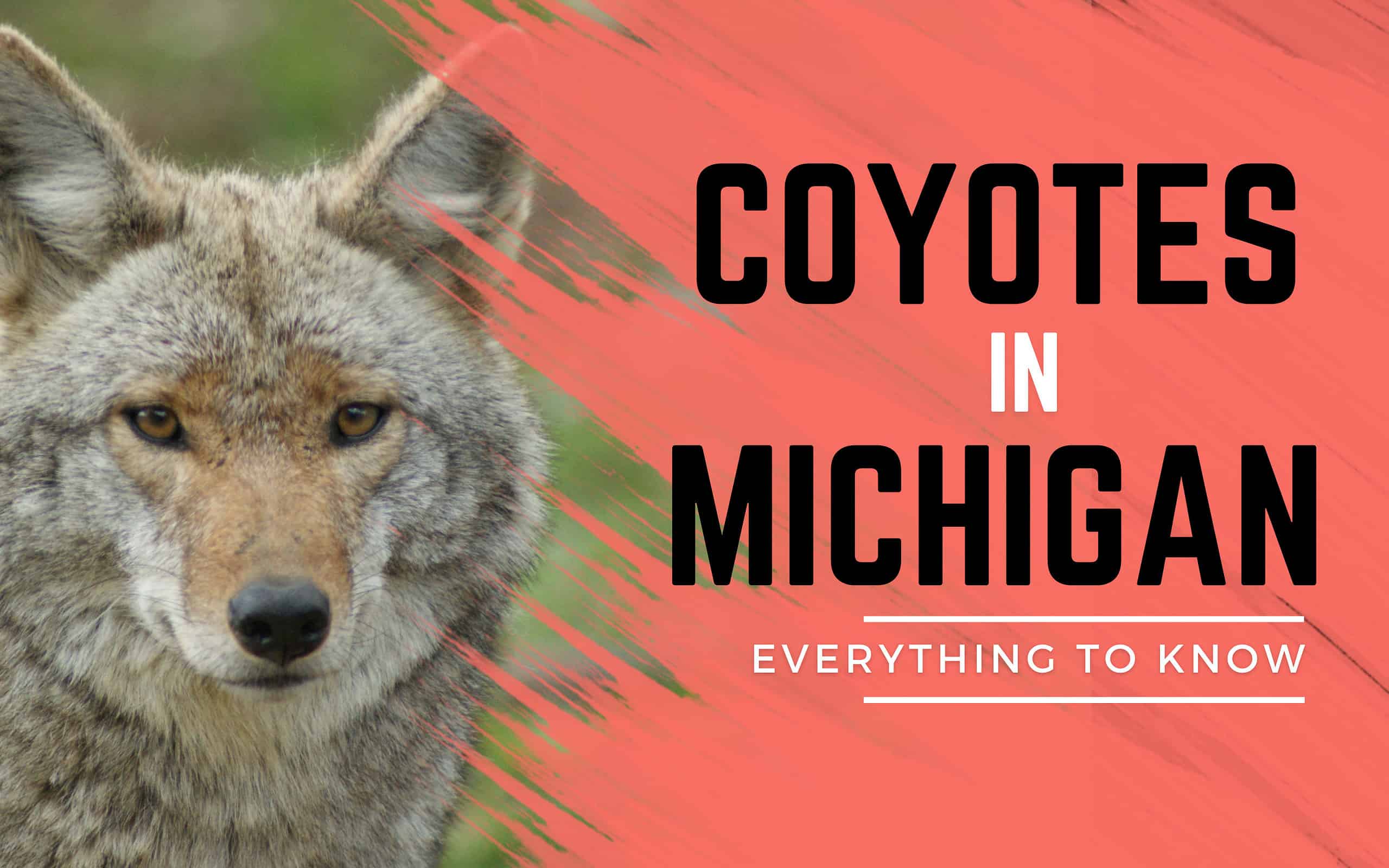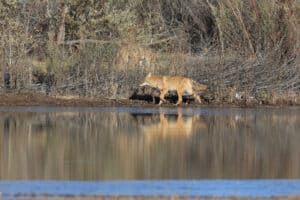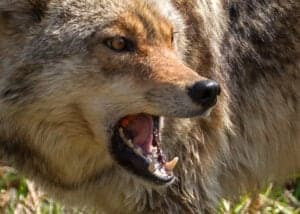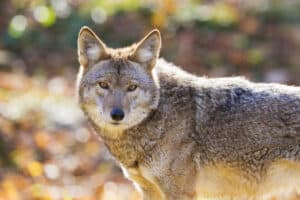You might think of coyotes as wilderness predators roaming the mountains and forests of the Rocky Mountains. That’s only part of the story. Today, these predators roam every state except Hawaii, as well as much of Canada, Mexico, and Central America. They thrive not only in the wild but also manage to live alongside people in the suburbs and even in downtown urban neighborhoods of Chicago, Boston, and Atlanta.
The exact number of coyotes in Michigan is unknown, but they are thriving and multiplying. They live in every county of the state and have been sighted in Detroit, Battle Creek, and Kalamazoo. This article explores what’s happening with coyotes in Michigan, including where they live, how they behave, and the rules for hunting them.
Coyotes: What You Need to Know
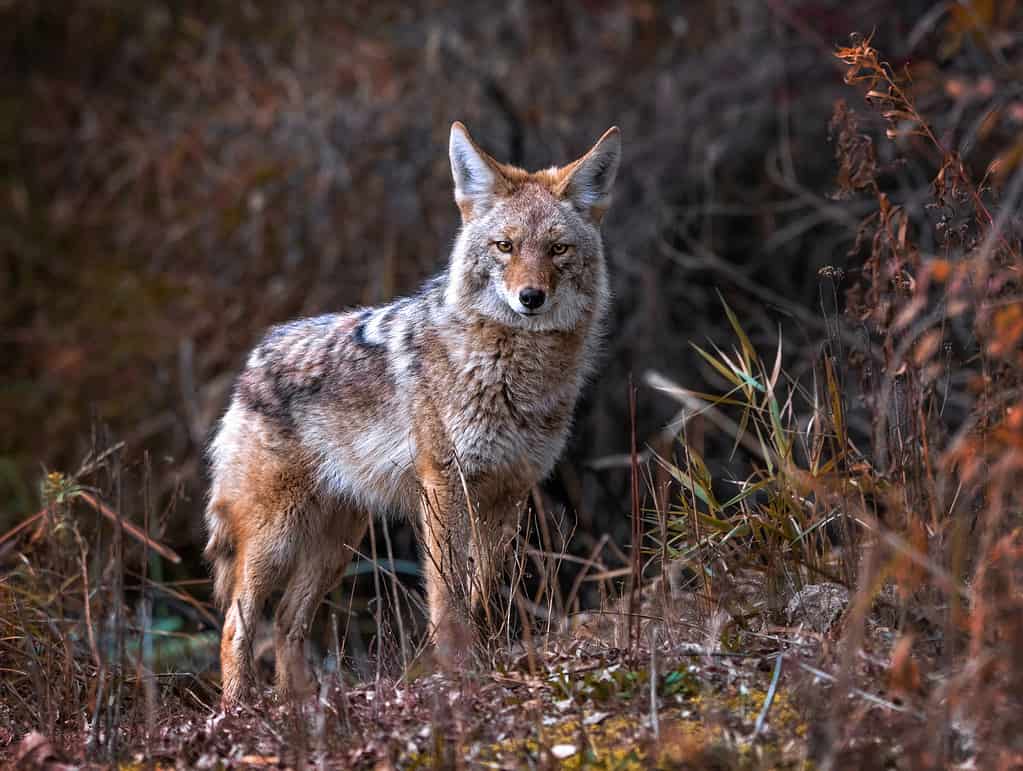
Coyotes are similar in size and coloration to
German shepherd
dogs.
©graphicphoto/iStock via Getty Images
Size and Appearance
Coyotes are a group of 19 species of canines related to wolves, jackals, and domestic dogs. In fact, at first glance, a coyote might be mistaken for a skinny German shepherd. They measure 40-60 inches from nose to tail and weigh 25-30 pounds. Their bushy gray-to-red hair can make them look bigger than they actually are. The predominant species in Michigan is the northeastern coyote. They have increased in size over time due to interbreeding with wolves and domestic dogs.
Communication
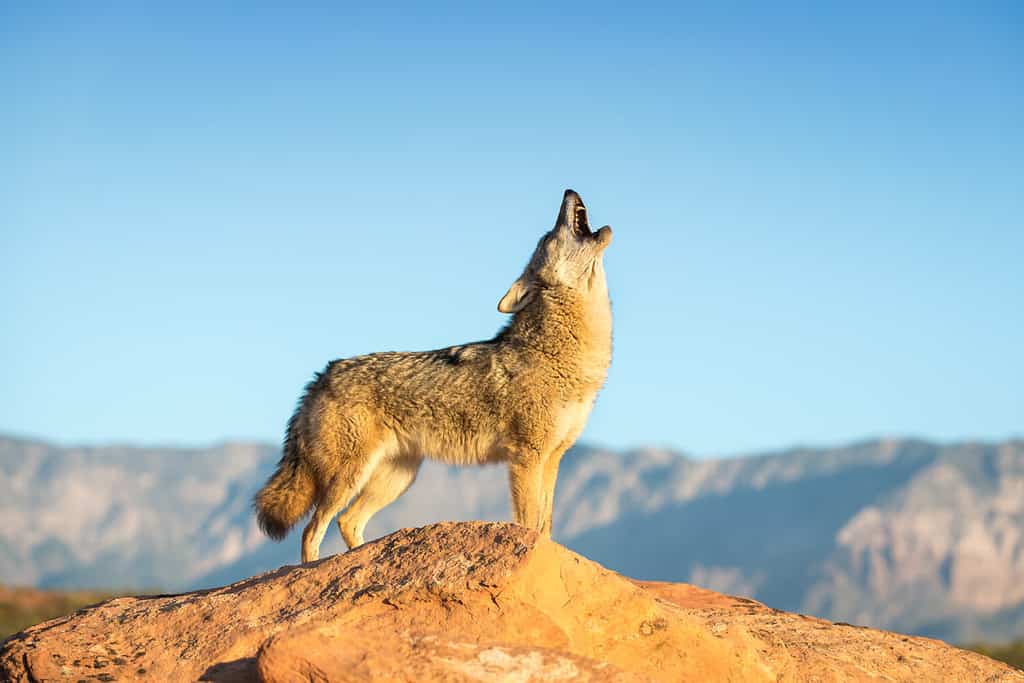
Coyotes howl to communicate with one another.
©Warren Metcalf/Shutterstock.com
Coyotes communicate with a wide range of vocalizations: barking, growling, whining, howling, yelping, yipping, and huffing. They are nocturnal animals, so evening is when you’re most likely to hear them. Do they howl at the moon? Not exactly. They howl at night but are not reacting to the moonlight. In fact, studies have shown that if anything, they tend to howl more on dark nights. There’s nothing sinister about it: they are just communicating with family members and warning off intruders.
Hunting and Diet

Coyotes hunt individually or in family groups, not packs of unrelated animals. They are omnivores and opportunists. They’ll catch small mammals, clean up roadkill, eat insects, get into gardens to eat fruits and vegetables, and even snatch a cat or small dog if they can get away with it. In populated areas, they can be tempted by garbage or pet food left outdoors overnight. If necessary, though, a coyote can kill a much larger animal, like a deer. Their strategy is to chase and nip at the animal’s legs and flanks until it tires and suffers blood loss; then they go for the throat to make the kill.
Reproduction
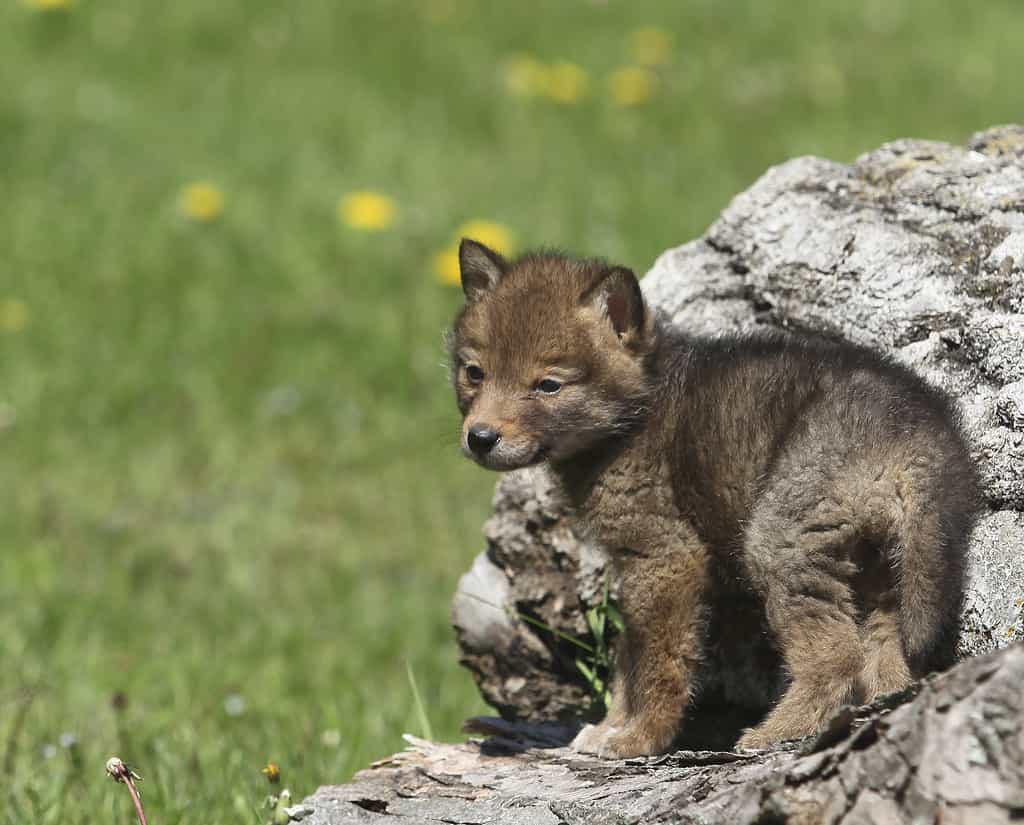
The size of coyote litters varies with the availability of food in their habitat.
©Lynn_Bystrom/iStock via Getty Images
Breeding season for coyotes in Michigan is January-March. They typically have litters of four to seven pups, depending on the food supply. This means that if coyote populations are thinned through hunting, this can result in coyotes having larger litters. In the wild, coyotes live only six to eight years. Coyotes can interbreed with dogs, and the resulting hybrids are called coydogs. Some people keep them as pets, but this is ill-advised, as coydogs have strong wild instincts and can be unpredictable and dangerous.
Are Coyotes Dangerous to People?

©Ajax9/Shutterstock.com
There have been only two reported fatalities of humans killed by coyotes in the United States or Canada. In Michigan, there have been no known attacks by coyotes on humans. They are shy and avoid people, so if you encounter one on your property or on a hike, you can scare them off by making noise. However, they can potentially be a danger to small pets and children not supervised by an adult. People who are unfamiliar with their appearance can mistake them for dogs and try to feed or pet them, putting themselves in danger. Coyotes can carry diseases, including rabies, that can infect pets. And because they scavenge for roadkill, they can become roadkill themselves, creating a hazard for drivers.
Hunting Coyotes in Michigan
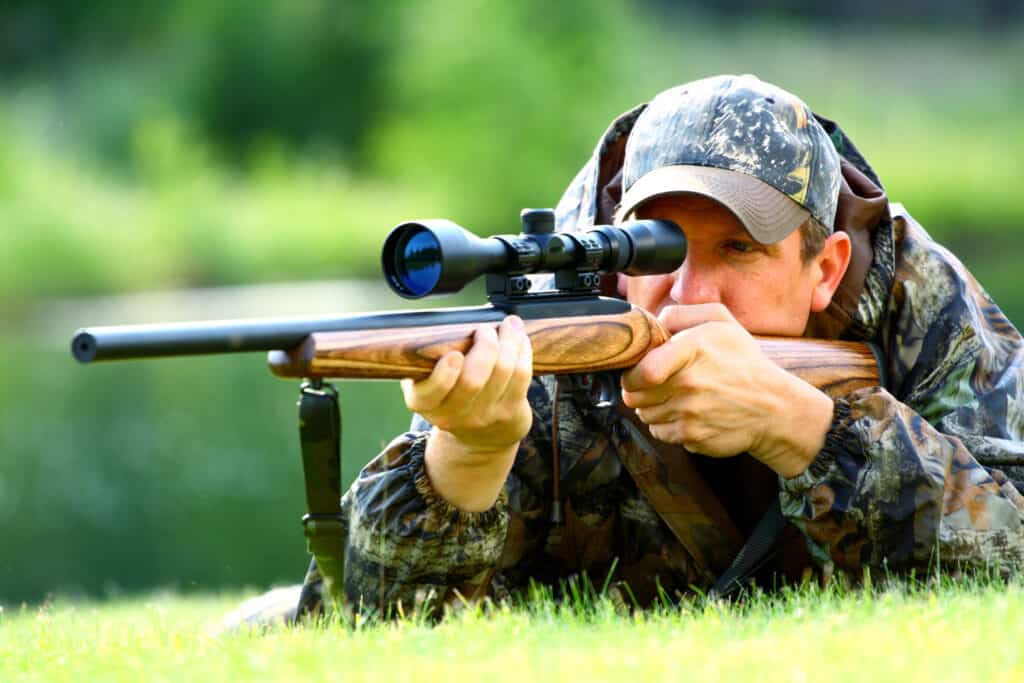
It is legal to hunt coyotes year-round in Michigan.
©timotheos/Shutterstock.com
Coyotes are not endangered. Because humans have removed the larger carnivores like wolves, mountain lions, and bears from populated areas, coyote numbers have multiplied nationwide to fill the niche. Hunting and trapping are part of a strategy to control their population, but to be effective, culls need to be done frequently.
For this reason, in Michigan, it is legal to hunt coyotes all year with firearms or archery equipment with a BASE hunting license. Night hunting is closed during firearms deer hunting season each year. Private landowners or their designees can hunt them without a license if the animal is a danger to property, pets, livestock, or people. It’s important to pay attention to any local ordinances and safety zones around populated areas. Landowners who want the animals removed but do not want to hunt them themselves can contact trappers from the Michigan Trappers and Predator Callers Association or hire a wildlife nuisance control company.
Live and Let Live?
Coyotes Can Be Useful

Coyotes help keep down the population of invasive feral cats that do great environmental damage.
©Julie Marshall/Shutterstock.com
Of course, just because you spot a coyote on your property doesn’t mean it needs to be removed. They play a useful environmental role by cleaning up carrion and keeping down the population of vermin. As unpleasant as it may be to cat lovers, even killing cats is a highly useful coyote behavior, as there are an estimated 70 million stray and feral cats in the country that are particularly devastating to bird species.
Nonlethal Means Can Work
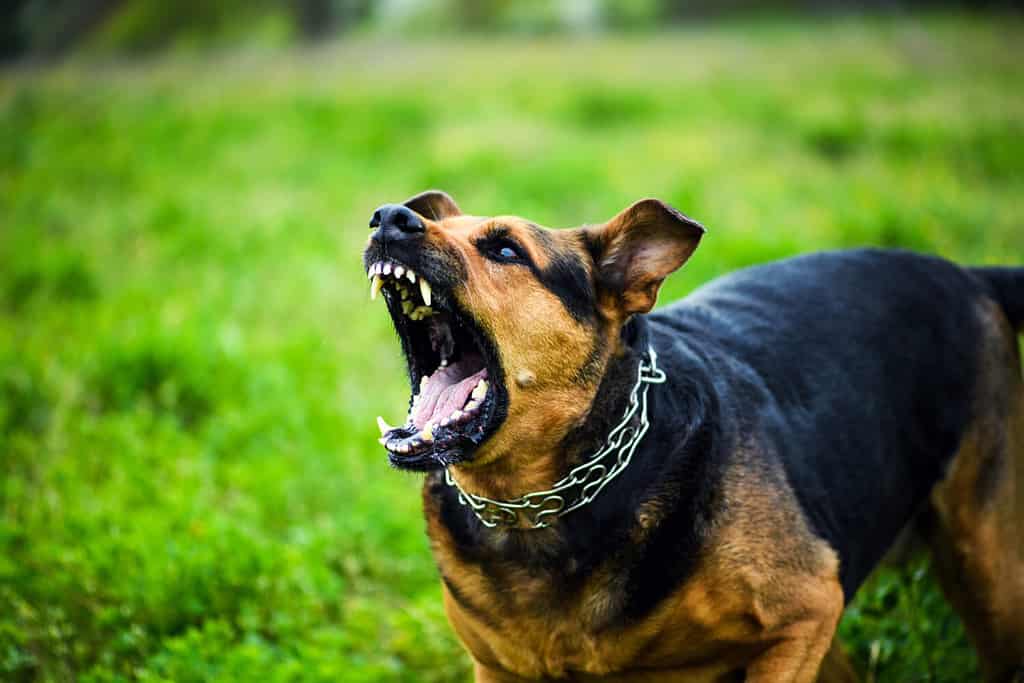
A large-breed watchdog can make your yard less appealing to coyotes.
©The Len/Shutterstock.com
If you manage a farm with large fields and numerous livestock, trapping and hunting coyotes may be the best choice to protect your property. But for suburban homeowners trying to keep their backyard safe, there are numerous nonlethal options:
- Purchase wolf urine or other repellants.
- Keep a larger-breed watchdog to scare them off.
- Install motion sensor lights and alarms.
- Enclose your yard and garden with 6-foot-high fencing.
- Keep shrubbery trimmed to remove hiding places.
- Keep garbage in bins with securely fastened lids.
- Don’t leave pet food outside.
- “Haze” any coyote you encounter by yelling, throwing things, or spraying them with a water hose.
Using these types of methods, suburban homeowners and coyotes may be able to live more comfortably side-by-side in a mutually beneficial relationship.
Thank you for reading! Have some feedback for us? Contact the AZ Animals editorial team.

